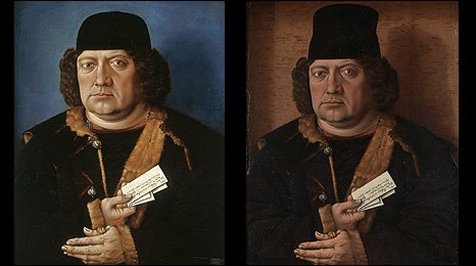The great masters of painting have always been victims of copycats. But how do you know when you're looking at a fake painting?
Sophisticated frauds often are only unmasked with the help of multidisciplinary exams and detailed evaluations. X-rays, UV light, infra-red, grazing light and chemical analysis are some of the tests used to evaluate the fidelity of a suspicious painting. A team of scientists usually includes an art historian, a conservative, a graph documents copyst and a chemist. Each exam and their comments are reunited in reports that often have more than a hundred pages. Sometimes, though, even the specialists can't be sure about a possible fraud.
Sophisticated frauds often are only unmasked with the help of multidisciplinary exams and detailed evaluations. X-rays, UV light, infra-red, grazing light and chemical analysis are some of the tests used to evaluate the fidelity of a suspicious painting. A team of scientists usually includes an art historian, a conservative, a graph documents copyst and a chemist. Each exam and their comments are reunited in reports that often have more than a hundred pages. Sometimes, though, even the specialists can't be sure about a possible fraud.
~Ally

 RSS Feed
RSS Feed